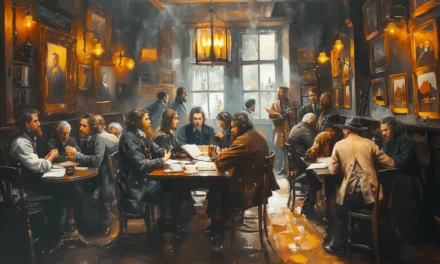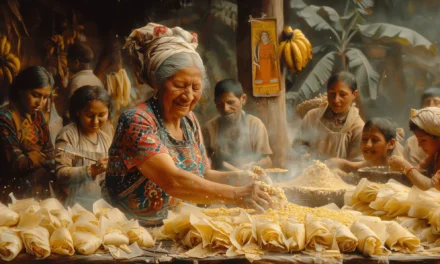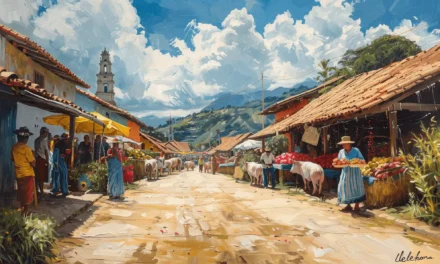There’s a cheesy old tale about how cheese came to be. It all started in the quaint town of Paipa, where the farmers were the cheesiest of the bunch. Bringing their cheese to the local market, they set off on long journeys, like a cheese pilgrimage if you will. Along the way, their cheese slowly matured and developed until it became the delicious, creamy cheese we all know and love today.
For Paipa cheese, It’s said that it originates in Palermo, which must’ve been a cheese lover’s paradise because the Dominican reverends of the area got their hands on some ‘paturras’ cows and decided to make the cheese last by aging it1.
Despite their attempts to steal the cheese-making crown, the producers of Sotaquirá can’t deny that the origin of the cheesy deliciousness lies with the Avendaños.
This assortment of tales and legends of Paipa Cheese is like a never-ending cheese platter, where all the flavors mix and match together to create one delicious story.
The Cattle Rush: José Celestino Mutis and the New Republic of Colombia
At the start of the nineteenth century, José Celestino Mutis was just going out on his first botanical expedition when he bumped into Alexander von Humboldt, a well-known German scientist. José, excited to have the opportunity to have a conversation with Alexander, eagerly jumped at the chance to discuss all sorts of scientific matters2.
Mutis ventured out on some excursions around Santa Fe with a scientist. During one of their trips, he stumbled upon a cheese in the region of Boyacá that he remarked was incredibly similar to Dutch cheese – the kind you would find in the markets of Sotaquirá, Paipa, and Duitama2.
Years later, during the liberation campaigns, this cheese was undoubtedly one of the stars amongst General Santander’s troops. Munching on cheese was much more exciting than the same dried meat, plantains, and cassava served day after day. Not only was it highly portable, so it could come along with them for the march, but it also lasted much longer without refrigeration. It was such a lifesaver for his army. It was almost like General Santander had discovered a hidden cheese fountain2.
Once the shiny night of independence is over, the New Republic of Colombia faces a dawn of reconstruction and repair. Livestock activity is its breakfast, lunch, and dinner; Here, milk and meat are the main ingredients for a nation-building dish. While the moody skies of revolution swirl, Colombia works the land to raise cattle and poultry with the same ambition and effort we showed during our fight for independence2.
In essence, it was a herd mentality among cattle ranchers in the Cundiboyacense highlands from 1849 to 1886 – they all wanted a piece of the ‘European bovine’ pie. They were stampeding to learn more about these foreign steers, affectionately referred to as ‘euro-steers’, and selected their finest specimens to get their hands on the choicest cuts of cattle2.
Among these imports, the arrival of Norman and Holstein cattle make for quite the story! Like an eager professor introducing their new class to a bunch of wide-eyed freshmen, Don Juan Carrasquilla and Don Julio Barriga proudly brought in their prized Holstein bull and two Norman bulls—ready to take full advantage of the highlands’ warm climate and topographic versatility. Their herding experience was sure to have made those bovines feel right at home2.
Following the Path of Cheese Making in Paipa and Sotaquira
In both Paipa and Sotaquirá, the two producing municipalities, there are different versions of their origin and evolution to the present day3.
A local historian, Julio Díaz, dishes out some mouth-watering knowledge about the appearance of cheese maturing in the region – it all started at the Ocusá farm, one of the three farms that made up the town of Sotaquirá. Now, this isn’t just any regular cheese – it is so fine that it’s as if you’ve taken a bite out of history. Luis Guillermo Rodríguez is like a chef, reconstructing the political-administrative distribution of the municipality in exquisite detail3.
With his hard work and determination, we can trace the formation of these impressive estates – likened to jewels in the fertile crown of Boyacá. After independence, the dissolution of the Indigenous Reservation left its mark on the transforming northern region, leaving behind a legacy of lush, lush valleys that are a pleasure to behold4.
Since the mid-nineteenth century, this farm has been shining like a beacon of delicious dairy and bountiful ingredients, with goodies like potatoes and corn rolling off the assembly lines. They churned it into delicious butter and cheese from the overflowing excess of milk production to later sell on the streets of Tunja and Paipa4.
The sleepy little town of Sotaquirá often gets overlooked in history books, but its contributions shouldn’t be underestimated! After all, who doesn’t love a nice, creamy Ocusá cheese to top off a hot cup of chocolate, especially when it comes straight from Sotaquirá?

Delightful Dairy: A Look at the Origin of Cheese in the Boyacá Region
The truth is that the valleys where this cheese-making practice began were already well-known for their Dairy-tale production of delicious cheeses and other milk derivatives. According to the local grocer and the cheese-makers in the two surrounding municipalities, the cheese took its name from the Paipa market, which was celebrated with a proverb-worthy reputation due to its privileged position between Santander and the center of the country like an artery to the heart of the nation4.
Since the republic’s beginning, Paipa has been part of the tasty and cheesy province of Tundama in Boyacá, like a yummy bridge connecting the country’s midsection to Santander and Venezuela. Travelers and merchants alike nicknamed Paipa the ‘Cheese of the Republic.’ Still, over time, shopkeepers earned the right to give it another recognition – Reinoso Cheese, Cured Cheese, and Yellow Cheese – each delicate and delicious name that makes us want to sample every bit1.
Cheesy Talk: How Cundiboyacense Highlands Broke New Ground
So, it can be said that the farmers in the Cundiboyacense highlands were perhaps a bit ahead of the cheese-making curve in the first half of the 20th century, similar to how someone might be ahead of their old group of friends when it comes to growing up and taking on more adult responsibilities. This trend extended to the valleys and farms nearby, where cheese-making flourished, and it soon became the norm. Nowadays, finding a farm not offering tasty, cured cheese would be practically unheard of1.
This cheese was the gift that kept on giving. It was like a trusty sidekick, always ready to save the day by lasting longer than milk or other dairy products.
This storage was easy as pie. A bright yellow, hard shell formed around it when it was ready to go. It was like wrapping a paper-mache present; it snugly secured the cheese and ensured it stayed safe and sound for extended stretches of time3.
The Delicious Adventure: How Cheese Found its Way to Bogota
Several of the producers, who descend from families in Sotaquirá and Paipa, narrate how cheese entered the Bogotá market thanks to the Northeast Railroad. This train allowed communication between the departments of Boyacá and Cundinamarca, facilitating the transportation of raw materials to supply the capital3.
According to Granados, the cheese was picked up at the Paipa train station, and sometimes even made a stop in Sotaquirá, and then took it to Bogotá where it was sold mainly in the marketplaces3.
Like many great inventions, luck of circumstantial events influenced the formation of its slightly bitter taste, typical of semi-mature cheeses. César Sandoval, the producer, and current president of the Paipa Cheese Producers Association is heir to the tradition4.
Two generations ago, his family headed cheese production, and he, who qualifies this as a sacred story, tells the secret of the taste: “As the roads that producers had to travel were long and they were crossed by a yoke or on foot, the cheese it began to mature and cure1.
Other characteristics, such as the climate, the breed of the cows, and the soil, today determine the flavor of the product”1
- Carvajal Hernández, P. M. (2019, October 10). Lo inacabado del Queso Paipa: materialidades orgánicas, actores diversos y valores heterogéneos. Retrieved from Universidad del Rosario: https://repository.urosario.edu.co/handle/10336/20439[↩][↩][↩][↩][↩]
- Susa Barbosa, M. F., & Triviño Hernández, N. M. (2018, February). Diseño de una ruta turística del queso Paipa, producto con denominación de origen del municipio de Paipa, Boyacá. Retrieved from Universidad Externado de Colombia: https://bdigital.uexternado.edu.co/handle/001/768[↩][↩][↩][↩][↩][↩]
- Neira Flechas, D. O. (2019, July 10). La reinvención del queso Paipa : usos y transformaciones del pasado en la construcción del patrimonio. Retrieved from Universidad de los Andes: http://hdl.handle.net/1992/45586[↩][↩][↩][↩][↩]
- Noguera, N. (2013, May 15). El origen del queso Paipa, un producto que se abre paso en el mercado. Retrieved from El Tiempo: https://www.eltiempo.com/archivo/documento/CMS-12802666[↩][↩][↩][↩]




